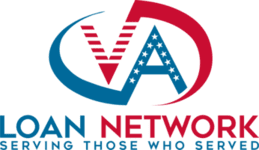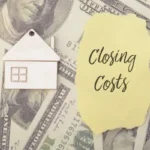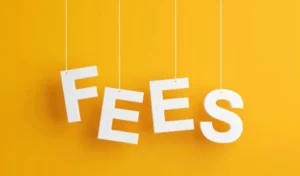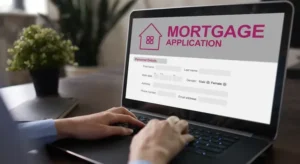If you’re a Veteran or active-duty Military service member, there’s exciting news on the horizon that could significantly reduce the cost of buying a home. A new bill introduced in Congress aims to lower the VA loan funding fees that come with many VA home loans.
These funding fees are part of what keeps the VA Home Loan Program running smoothly, but they also add to the overall expense of buying a home. If this bill becomes law, Veterans could see their upfront costs drop by thousands of dollars, making an already attractive VA loan even better.
In this article, we’ll explain how VA loan funding fees work, why they matter, and how the proposed bill might reshape the landscape of Veteran home buying. We’ll also look at potential savings, who qualifies, and how to best prepare if these changes go into effect.
In this Article
What Are VA Loan Funding Fees?
VA loan funding fees are one-time charges typically applied when you take out a mortgage backed by the U.S. Department of Veterans Affairs (VA). These fees either get paid upfront at closing or rolled into the total loan amount. The central purpose is to keep the VA Home Loan Program financially healthy without relying on taxpayer dollars.
Most Veteran homebuyers find that VA loans offer significant advantages: zero down payment options, no private mortgage insurance (PMI), and competitive interest rates. The funding fee helps cover these benefits. The exact fee depends on factors such as:
- Your down payment amount
- Whether it’s your first or subsequent use of a VA loan
- The type of VA loan (purchase, cash-out refinance, etc.)
- Your Military service category
For example, a first-time buyer with no down payment typically sees a funding fee of 2.15% of the loan amount. On a $300,000 home purchase, that comes to $6,450. While that’s not a small amount, many Veterans find that no PMI and favorable terms offset the cost over time.
The newly introduced bill proposes to reduce these fees, which could make a huge difference for Veterans who are cost-conscious and looking for more accessible homeownership solutions.
Why the Bill to Lower VA Loan Funding Fees Is a Big Deal
For many Veterans, the VA loan program is a critical stepping stone to homeownership. Its core benefits are designed to reflect and reward Military service. However, the funding fee can be a stumbling block for some, especially those on tight budgets or first-time homeowners adjusting to civilian life.
Here’s why lowering these fees matters:
- Reduced upfront costs: If you can pay less in fees, that’s more cash you can keep in savings or apply toward a down payment, closing costs, or moving expenses.
- Improved affordability: Every dollar you don’t spend on fees can make a noticeable difference in expensive housing markets. This is crucial if you’re looking at homes in high-cost areas where every bit of financial breathing room counts.
- Encouraged use of VA benefits: Some Veterans opt for conventional loans to avoid the funding fee. Lowering the fee could bring more Veterans into the VA loan program, allowing them to fully leverage the benefits they’ve earned.
- Financial stability: With reduced fees, more Veterans may qualify for homes they previously couldn’t afford. A lower monthly mortgage payment or lower overall loan balance often translates into a stronger financial foundation over the long term.
The conversation around this legislation also highlights the reality that Veterans face unique economic and lifestyle challenges. According to the National Association of Realtors, housing prices in many metropolitan areas continue to climb, pushing the national median home price to over $400,000. In that price range, a 2.15% funding fee can be a significant sum. Any reduction can lessen the financial burden and encourage homeownership.
How Much Could Veterans Save?
The exact numbers are still subject to change, but the idea is to trim the funding fee by a certain percentage. Even a modest reduction of 0.5% can yield meaningful savings. Below is a look at current VA loan funding fees (as of 2025) and a hypothetical scenario of what a half-percentage-point decrease could mean for Veteran homebuyers.
Current VA Loan Funding Fees (2025)
| Loan Type | First-Time Use | Subsequent Use | Down Payment |
|---|---|---|---|
| Purchase (0% down) | 2.15% | 3.3% | None |
| Purchase (5%+ down) | 1.5% | 1.5% | 5% or more |
| Purchase (10%+ down) | 1.25% | 1.25% | 10% or more |
| Cash-Out Refinance | 2.15% | 3.3% | None |
| Interest Rate Reduction Refinance Loan (IRRRL) | 0.5% | 0.5% | None |
Estimated Savings with a 0.5% Fee Reduction
| Loan Amount | Current Fee (2.15%) | Proposed Fee (1.65%) | Savings |
|---|---|---|---|
| $200,000 | $4,300 | $3,300 | $1,000 |
| $300,000 | $6,450 | $4,950 | $1,500 |
| $400,000 | $8,600 | $6,600 | $2,000 |
| $500,000 | $10,750 | $8,250 | $2,500 |
In these examples, even a half-point cut adds up fast. For instance, if you’re aiming for a $400,000 home, saving $2,000 might help cover closing costs, home inspections, or new furniture for your family.
Who Qualifies for VA Loans?
VA loans aim to reward the service of:
- Active-duty Military members
- Veterans with an honorable discharge
- Some surviving spouses of deceased service members
- National Guard and Reserve members who meet specific service requirements
One of the first steps in the VA loan process is obtaining a Certificate of Eligibility (COE) from the VA. This COE confirms you meet the basic service criteria. Most VA lenders require a minimum credit score of 620—but the exact requirement can differ from lender to lender. Because VA loans are backed by the government, lenders often have more flexibility on credit scores and debt-to-income ratios than conventional loans.
If the proposed changes to the funding fees happen, more Veterans could qualify. A slightly lower loan amount or monthly payment can help meet a lender’s ratio guidelines, and that opens the door to homeownership for more Military families.
How Would the Bill Work?
Although the final details of the bill are still in flux, the general plan is to modify the existing VA Home Loan Program and lower the funding fees attached to new loans. Congress would have to debate how much they want to reduce the fee and whether there would be any specific conditions attached. They might look at focusing on first-time VA borrowers, those with service-connected disabilities, or certain high-cost housing markets.
Any bill that alters VA loan fees must also consider how to maintain the program’s long-term viability. In the past, proposals to remove or reduce the fee have sometimes stalled because policymakers want to ensure the VA can still provide robust guarantees to lenders without exhausting its budget. However, there is often bipartisan support for bills that benefit Veterans, so there’s reason to be optimistic.
To track the bill’s progress, you can visit Congress.gov and search for recent legislation related to VA loans. You can also keep an eye on official updates at VA.gov or check with local Veteran organizations such as the Veterans of Foreign Wars (VFW) or the American Legion.
Benefits Beyond Lower Fees
While the main highlight here is saving money, lowering VA loan funding fees speaks to a broader mission: making homeownership more accessible and rewarding for those who have served. Here are a few key ways reduced fees can make a difference:
- Easier transition to civilian life: Many Veterans move frequently while in service. Finally settling down after separation from the Military can feel overwhelming, especially if funds are tight. A lower fee could ease that transition.
- Wealth-building potential: Owning a home is a proven way to build long-term wealth. With lower fees, Veterans can reduce their loan amounts or monthly payments, potentially freeing up resources for savings, investments, or other family needs.
- Encouraging community roots: Lower costs can motivate more Veterans to plant roots in a community. Homeownership often promotes local involvement, stable family life, and a deeper sense of belonging.
Whether you served in the Marines, Army, Navy, Air Force, Coast Guard, or Space Force, a reduced fee can alleviate financial stress and help you better secure your future.
Potential Drawbacks to Consider
No policy is a one-size-fits-all solution. Even if the fee is lowered, it’s important to be mindful of the bigger picture:
- Program sustainability: If funding fees become too low, the VA may face budget challenges. That could, in the long run, mean stricter eligibility requirements or adjustments in other fees.
- Not all Veterans benefit immediately: If you’ve already paid your funding fee, you probably won’t get a refund. And if you refinance in the future, you might still pay a separate fee unless you qualify for special exemptions.
- Increased demand and housing prices: As VA loans grow more affordable, more buyers may jump into the market, potentially driving up competition and home prices—especially in areas with large Military populations.
Still, the upsides are compelling, especially if lawmakers take a balanced approach that keeps the program solvent while offering meaningful savings.
How to Prepare for the Bill’s Passage
If you’re a Veteran exploring homeownership, you don’t have to wait until this bill becomes law to set yourself up for success. Here are some proactive steps you can take:
- Obtain your Certificate of Eligibility: You can apply for your COE online through the VA’s eBenefits portal or by mail. This document confirms your eligibility for the VA loan program and is essential for lenders.
- Check your credit score: Lenders typically require a credit score of 620 or higher for a VA loan. Get a free copy of your credit report, fix any errors, and take steps to boost your credit if needed.
- Gather financial documents: Before shopping for a home, collect pay stubs, bank statements, and tax returns. It simplifies the loan application process and shows lenders you’re serious.
- Shop around for lenders: Different banks and credit unions can offer different rates and fee structures. Look for those with experience in VA lending and ask about any available lender credits or discounts.
- Stay updated: Check reliable news outlets or official sites like VA.gov for any legislative updates. Veteran-focused organizations are also excellent resources for real-time information.
If the bill does become law, you’ll be ready to move fast. By lining up your COE, improving your credit, and comparing rates among lenders, you’ll be in a solid position to lock in a better deal before potential shifts in mortgage rates or home prices.
FAQs About VA Loan Funding Fees
- What is a VA loan funding fee?
It’s a one-time fee, usually ranging from 0.5% to 3.3% of the loan amount, paid to keep the VA Home Loan Program sustainable. Veterans can either pay it upfront or roll it into the mortgage balance. - Who pays the VA funding fee?
Most VA borrowers pay this fee unless they qualify for an exemption—for instance, Veterans receiving VA compensation for a service-connected disability or Purple Heart recipients on active duty. - Can the funding fee be waived?
Yes. Certain Veterans with service-connected disabilities, Purple Heart recipients, and surviving spouses of Veterans who died in service or from a service-related disability may be exempt. Always confirm with the VA for the most current guidelines. - How much could I save if the bill passes?
While the final reduction isn’t determined yet, a hypothetical 0.5% decrease on a $300,000 loan could save you around $1,500. - Will the bill affect existing VA loans?
It’s unlikely. Most legislation of this sort applies to new loans moving forward, not those that have already closed. - When will the bill take effect?
This depends on Congressional approval and administrative procedures. It could take a few months—or potentially longer—after the bill is signed into law. - Are VA loans still worth it even with the current fees?
Absolutely. VA loans remain popular among Veteran homebuyers because they require no down payment in many cases and don’t charge PMI, which often offsets the funding fee cost over the life of the loan. - How do I apply for a VA loan?
Start by requesting a COE from the VA. Then, work with a VA-approved lender, provide your financial documents, and compare loan options. Each lender might have slightly different rates and requirements. - Can I roll the funding fee into my loan?
Yes. Most Veterans choose to roll the funding fee into the total loan balance, although doing so will increase your monthly payments slightly. - Where can I track the bill’s progress?
Try Congress.gov, VA.gov, or stay connected with Veteran service organizations that regularly provide legislative updates.
The Bottom Line
If you’ve served in the Military and are considering homeownership, keep a close eye on developments around this proposed fee reduction.
Taking steps now—like securing a solid credit score, gathering your financial documents, and finding a VA-savvy lender—will position you to make the most of the legislation if it passes.
Even if changes to VA loan funding fees don’t happen right away, the VA loan program still offers powerful advantages that help Veterans secure stable housing, invest in their futures, and build long-term wealth. By staying proactive and informed, you’ll be ready to act when the time is right.


















